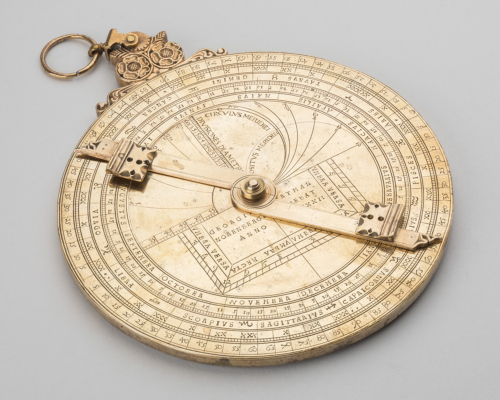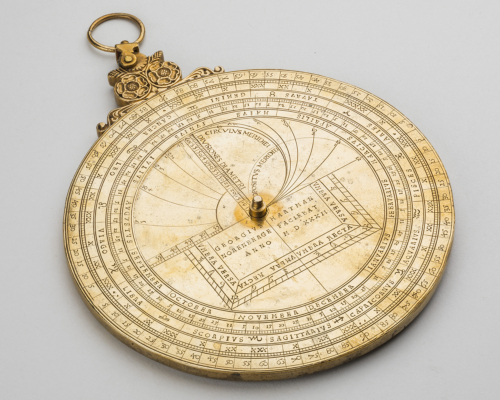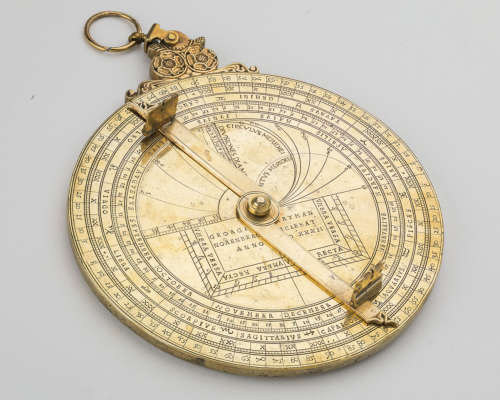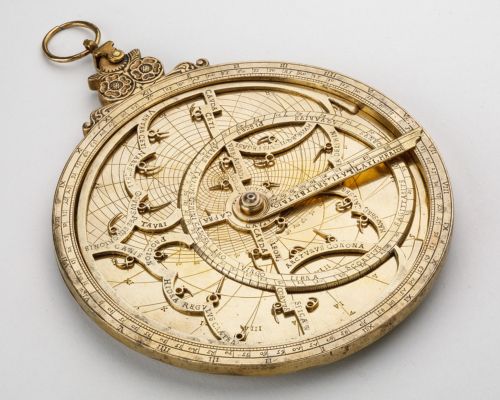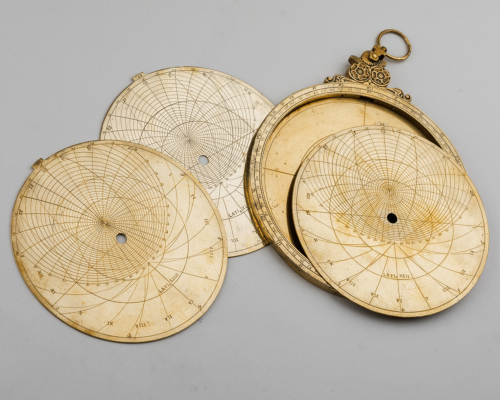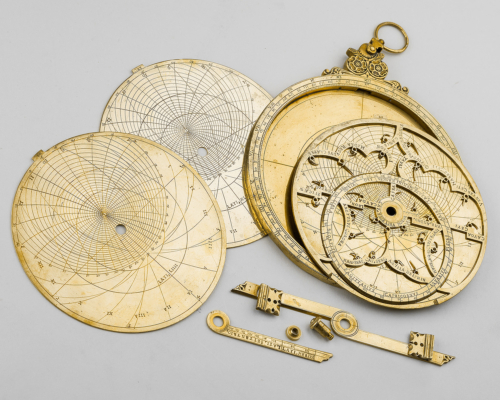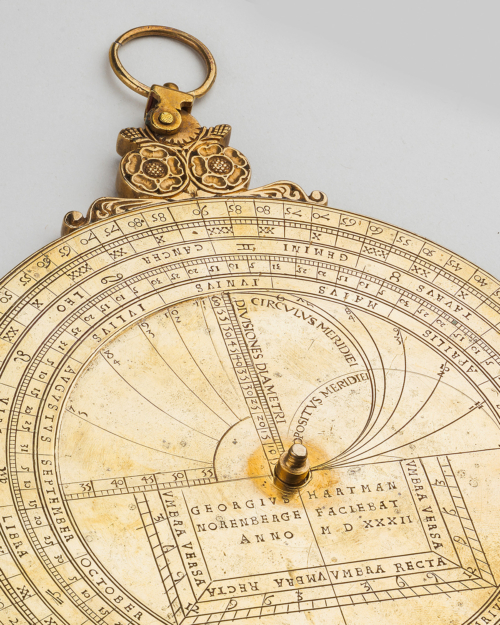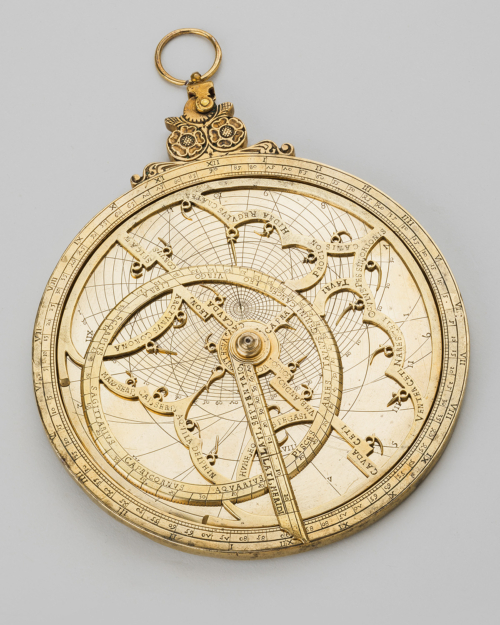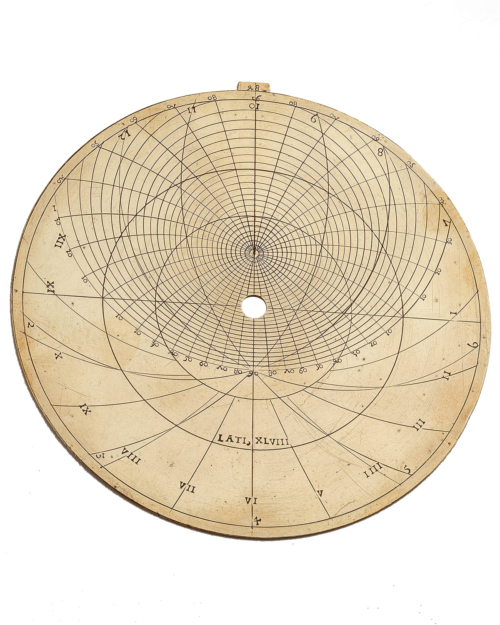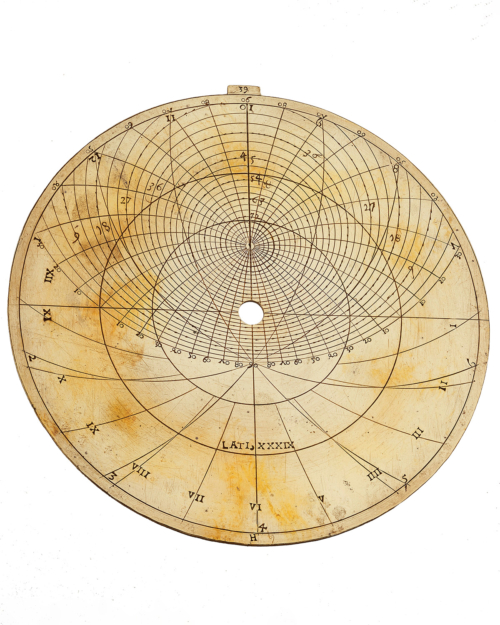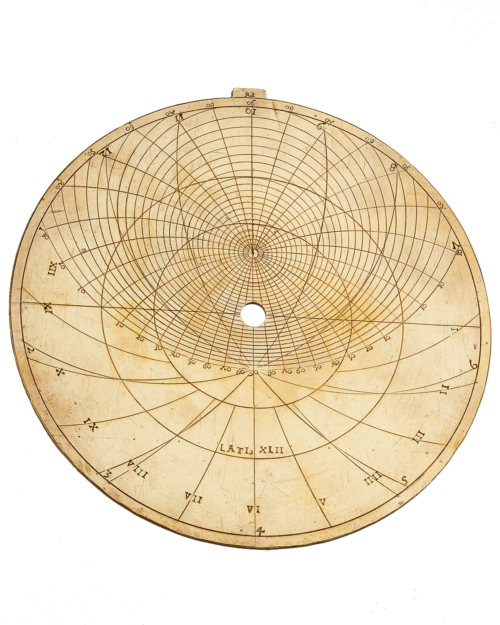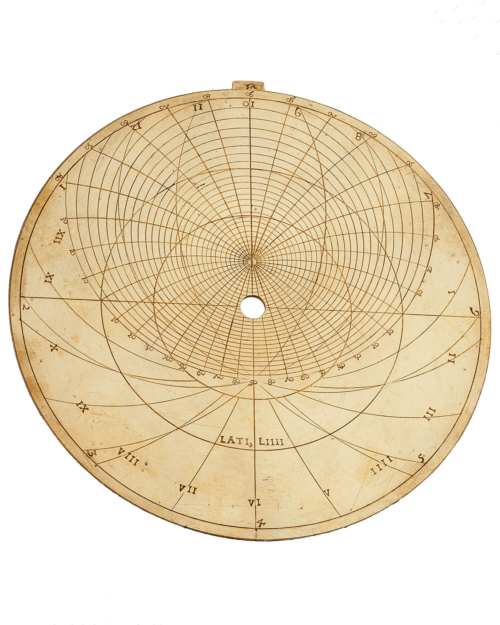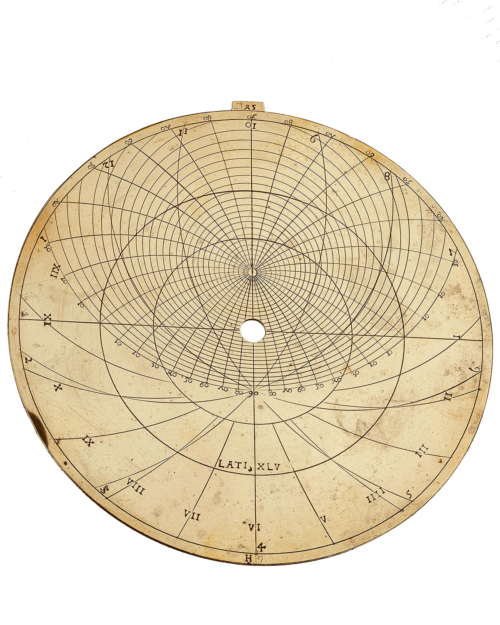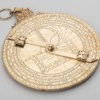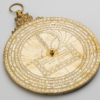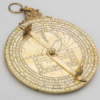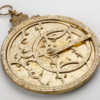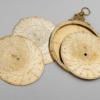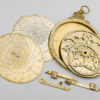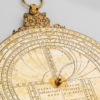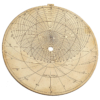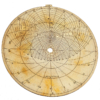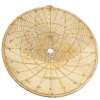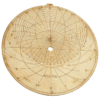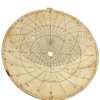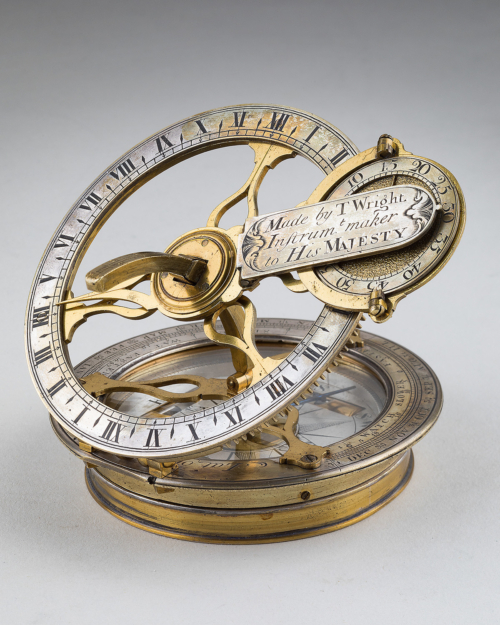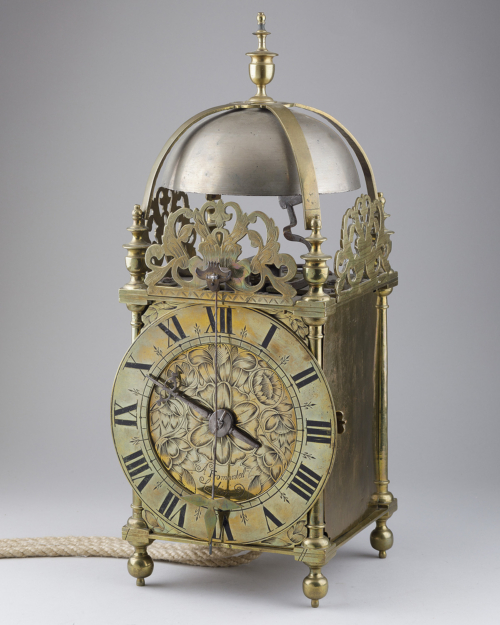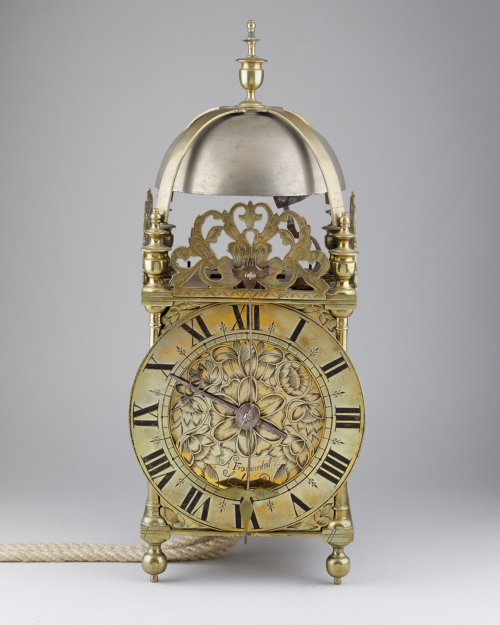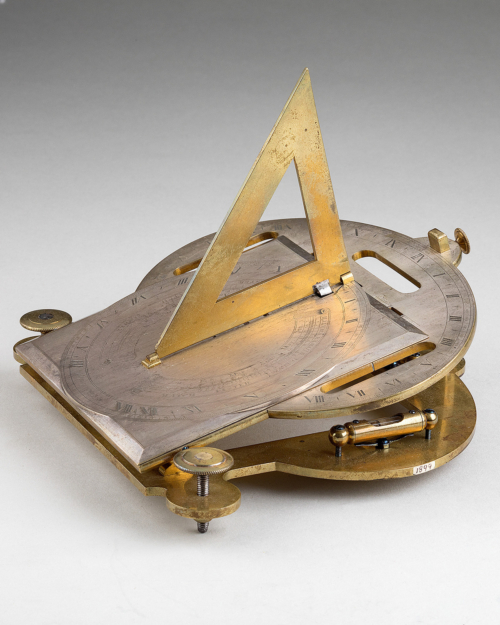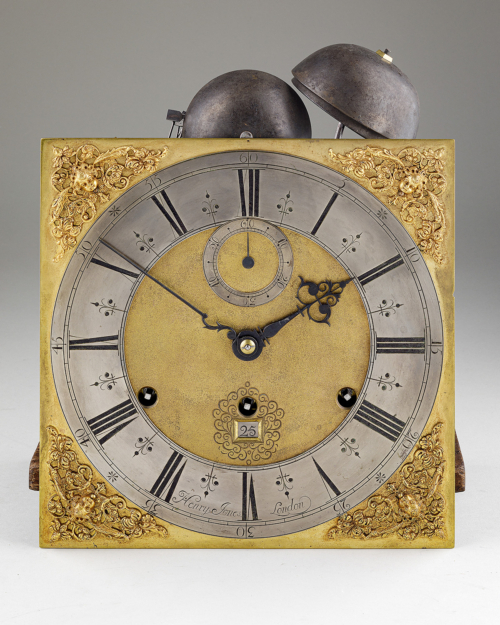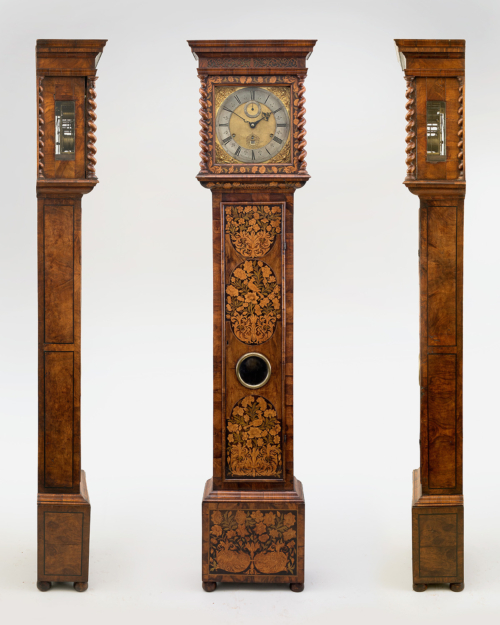| Height | 5⅜ inches (137 mm) diameter |
| Provenance | Sotheby’s, London, 8 December 1983, lot 159; The Time Museum, Rockford, Illinois, USA, inventory no.3123; Sotheby’s, New York, 2 December 1999, lot 3, sold for $134,500; John C Taylor Collection, inventory no.77. |
| Literature | AJ Turner, Time Museum Catalogue of the Collection: Time Measuring Instruments, Part 1: Astrolabes, Astrolabe Related Instruments, 1985, p. 128-31 AJ Turner, Early Scientific Instruments: Europe 1400-1800, London, 1987, p. 39-40 |
| Exhibited | 1990s, The Time Museum, Rockford, Illinois, USA |
| Notes | Signed GEORGIUS HARTMAN NOREN BERGE FACIEBAT ANNO MDXXII (trans: Made by Georg Hartmann, of Nuremberg, in the year 1532) on the reverse within the shadow square. The mater consists of a single sheet of metal riveted to the limb and, with the body of the suspension mount, is cast in one piece with the limb, the suspension mount itself consisting of a low scroll carrying two stylised flowerheads with acorn cones above, flanking a third flowerhead, through which the shackle is pinned. Engraved on the limb is an equal hour scale (twice I-XII) and a degree scale (0-90-0-90-0), numbered from East to West points and reading to one degree. The interior of the mater is engraved with circles for the Equator, the Tropics, and the two Meridians. The back of the mater is stamped around the edge with a degree scale similar to that on the front, within which is a concentric-type Zodiacal calendar (0 degrees Aries = 11 March), the degrees against the Zodiac segments numbered in groups of 10 in Roman numerals, and the days of the months in Arabic numerals. Within this are, in the upper left quadrant: a scale for conversion between unequal and equal hours; in the upper right quadrant: a scale of unequal hours, the 6 o’clock line labelled CIRCULUS MERIDIEI (circle of the Meridian, i.e. Noon), and engraved across the hour lines a semicircle marked OPOSITVS MERIDIEI (converse of the Meridian). The vertical dividing line between the two quadrants is marked with a scale (0-60 degrees) labelled DIVISIONES DIAMETRI. The lower quadrants contain a double shadow square surrounding the maker’s signature. There are 3 plates for latitudes at degrees 39, 42, 45, 48, 51, and 54, each obverse or reverse marked with the corresponding respective latitude, plus the 12 astrological houses of the heavens and, beneath the horizon only, a set of unequal hour lines. The alidade, which is not divided, is marked with a scale of latitudes.
The mater of the present astrolabe is marked with the position of 27 named, fixed stars corresponding with those listed by Hartmann in his 1528 account of astrolabe construction with the exception of the addition of Cauda Ursa, which is not included in the 1528 list. |
Exhibit № 1: Georg Hartmann, Nuremberg. Dated 1532
A rare Emperor Charles V (Habsburg) brass planispheric astrolabe
Sold
The planispheric astrolabe is a two-dimensional model of the celestial sphere in relation to the earth, based on the assumption that the earth is in the centre of the universe. It is a multifunctional instrument and can be used to tell the time, to determine the length of day and night, to simulate the movements of the heavenly bodies, for surveying and for astrological purposes.
Georg Hartmann (1489-1564) was a German engineer, instrument maker, author, printer, humanist, churchman, and astronomer. He was born in Eggolsheim and studied theology in Cologne, as well as being tutored in mathematics there by Henricus Glareanus (1488-1563). In summer 1518 he travelled through Italy, where he became friendly with Copernicus’s brother Andreas, plus studied the design of sundials and discovered the principle of magnetic dip. In 1518-44 he held the post of vicar of the fashionable church of St Sebald’s in Nuremberg, and while in the city he also established and directed a commercial manufactory of instruments. A friend of Albrecht Durer (1471-1528) and of Johann Schoner (1477-1547), Hartmann worked in the practical mathematics tradition, which emanated from the Middle Ages. He was greatly influenced by Johannes Stoffler (1452-1531), as well as Regiomontanus (1436-1476), some of whose manuscripts and instruments he possessed and whose rete design he adopted. In 1518 Hartmann began a practical treatise on the construction of sundials and astrolabes. Although this was completed in 1528 it was not published. In 1542 however he produced an edition of John Pecham’s Perspectiva Communis, a treatise on optics dating from 1292, and in 1554 an astrological work, the Directorsum.
Hartmann’s instrument-making workshop was one of the major suppliers of such objects in 16th century Europe. He produced fine instruments for royal and noble patrons such as Duke Albrecht of Prussia and Duke Ottheinrich, but was also a pioneer of production in quantity. He was perhaps the first maker systematically to print astrolabe parts on paper for assembly on cardboard or wood, thus providing an inexpensive instrument, and he also produced his more prestigious brass instruments in batches. The instrument offered here is one of six known dated 1532. All six instruments are the same size (within a measurement error range of 2mm), while the similarity of the suspension mounts suggests that they were initially cast from the same mould as were the retes which carry the same 27 stars. At least some of the same punches appear to have been used on these astrolabes, although minor differences of positioning and impression occur, as one would expect. Between the six astrolabes there are also some differences in the scales. The present instrument indeed is exceptional in this group for its treatment of the upper quadrants on the back of the instrument. The combination of the equal/unequal hour conversion diagram (top left quadrant) and the unequal hour diagram (top right quadrant), like the provision of Noon arcs and the diametral divisions, is not only unique to this 1532 group, but apparently also to the entire known corpus of Hartmann’s astrolabes. Neither is this layout described in Hartmann’s 1528 manuscript on astrolabe construction.
Product Description
The planispheric astrolabe is a two-dimensional model of the celestial sphere in relation to the earth, based on the assumption that the earth is in the centre of the universe. It is a multifunctional instrument and can be used to tell the time, to determine the length of day and night, to simulate the movements of the heavenly bodies, for surveying and for astrological purposes.
Georg Hartmann (1489-1564) was a German engineer, instrument maker, author, printer, humanist, churchman, and astronomer. He was born in Eggolsheim and studied theology in Cologne, as well as being tutored in mathematics there by Henricus Glareanus (1488-1563). In summer 1518 he travelled through Italy, where he became friendly with Copernicus’s brother Andreas, plus studied the design of sundials and discovered the principle of magnetic dip. In 1518-44 he held the post of vicar of the fashionable church of St Sebald’s in Nuremberg, and while in the city he also established and directed a commercial manufactory of instruments. A friend of Albrecht Durer (1471-1528) and of Johann Schoner (1477-1547), Hartmann worked in the practical mathematics tradition, which emanated from the Middle Ages. He was greatly influenced by Johannes Stoffler (1452-1531), as well as Regiomontanus (1436-1476), some of whose manuscripts and instruments he possessed and whose rete design he adopted. In 1518 Hartmann began a practical treatise on the construction of sundials and astrolabes. Although this was completed in 1528 it was not published. In 1542 however he produced an edition of John Pecham’s Perspectiva Communis, a treatise on optics dating from 1292, and in 1554 an astrological work, the Directorsum.
Hartmann’s instrument-making workshop was one of the major suppliers of such objects in 16th century Europe. He produced fine instruments for royal and noble patrons such as Duke Albrecht of Prussia and Duke Ottheinrich, but was also a pioneer of production in quantity. He was perhaps the first maker systematically to print astrolabe parts on paper for assembly on cardboard or wood, thus providing an inexpensive instrument, and he also produced his more prestigious brass instruments in batches. The instrument offered here is one of six known dated 1532. All six instruments are the same size (within a measurement error range of 2mm), while the similarity of the suspension mounts suggests that they were initially cast from the same mould as were the retes which carry the same 27 stars. At least some of the same punches appear to have been used on these astrolabes, although minor differences of positioning and impression occur, as one would expect. Between the six astrolabes there are also some differences in the scales. The present instrument indeed is exceptional in this group for its treatment of the upper quadrants on the back of the instrument. The combination of the equal/unequal hour conversion diagram (top left quadrant) and the unequal hour diagram (top right quadrant), like the provision of Noon arcs and the diametral divisions, is not only unique to this 1532 group, but apparently also to the entire known corpus of Hartmann’s astrolabes. Neither is this layout described in Hartmann’s 1528 manuscript on astrolabe construction.
Additional information
| Dimensions | 5827373 cm |
|---|

